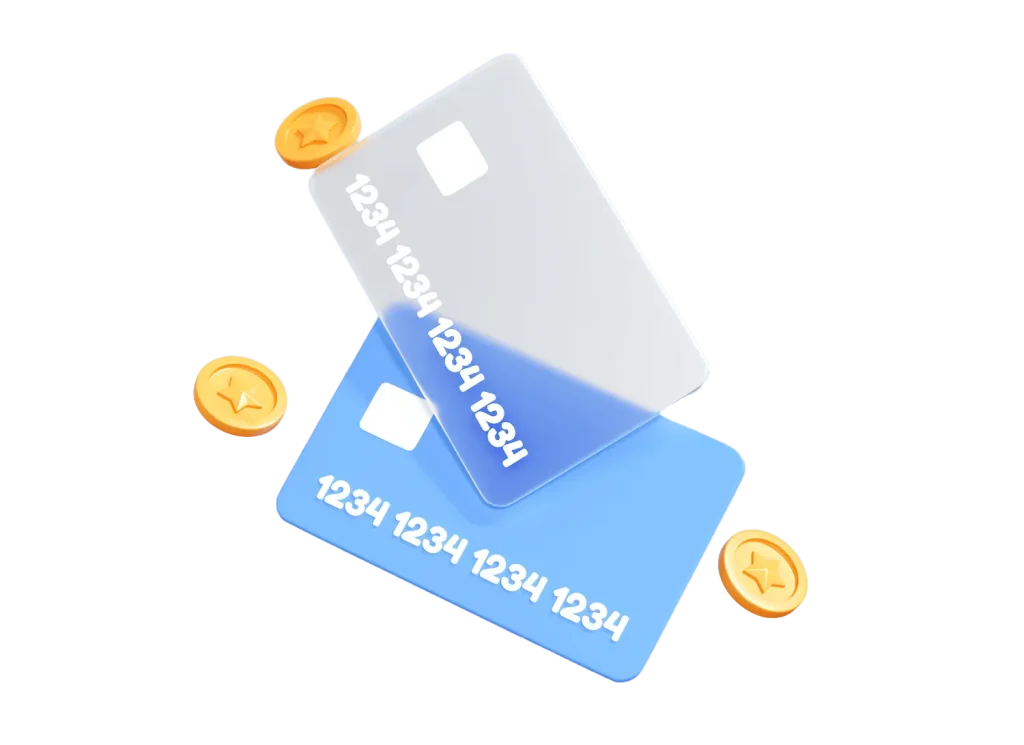
Published: 02/04/24
On this page:
▸ The facts on digital payments
▸ Digital card vs virtual card
▸ Which card suits your needs?
In a society where convenience is everything, it’s no surprise that people are searching for alternatives to traditional payment methods.
Today, there’s no need to head to the ATM or stand in line at the bank because the digital revolution has changed how we access – and spend money.
With various payment solutions available, people have more flexibility than ever—including digital and virtual cards.
Each card has its benefits, and understanding them can help you choose the best option for your needs.
In this guide, we’ll explore the main differences between digital and virtual cards, including their benefits.
The facts on digital payments
- One in three people say they don’t carry cash around regularly (Take Payments).
- The number of people using cash in POS transactions continues to decrease. It was 72% in 2019, which fell to just 59% in 2022 (ECB).
- Gen Z are most likely to use mobile payment apps, while Baby Boomers are the generation that prefers cash (Business.com).
- 55% of EU consumers prefer paying for things with cards or other cashless methods (ECB).
Digital cards explained
 Digital cards are popular payment solutions linked to bank accounts or physical cards. They’re often similar to traditional cards, except for one key difference: they exist only in digital form.
Digital cards are popular payment solutions linked to bank accounts or physical cards. They’re often similar to traditional cards, except for one key difference: they exist only in digital form.
Your digital card might have the same number and CVV as your physical card, but you can store the details in your banking app, mobile wallet or other online payment platforms.
For example, your bank might issue a physical card, and you’ll also have a digital version of that card on the app. Once you link it to accounts, you can make automatic payments without inputting information from the physical card.
Virtual cards explained
 While some people believe digital and virtual cards are interchangeable, they have some core differences. Unlike digital cards, virtual cards are standalone payment solutions, meaning they have a unique card number and security information.
While some people believe digital and virtual cards are interchangeable, they have some core differences. Unlike digital cards, virtual cards are standalone payment solutions, meaning they have a unique card number and security information.
There’s no need for personal information when making payments with a virtual card, as most come with encrypted technology. Businesses can use them for corporate spending, while consumers find virtual cards help them budget.
Many virtual cards are disposable, and preload options give consumers more control over spending.
Digital card vs virtual card
| Characteristic | Digital | Virtual |
|---|---|---|
| CharacteristicPrivacy | DigitalMost digital cards are linked to some form of account. | VirtualNot linked to bank accounts, offering maximum privacy. |
| CharacteristicSecurity | DigitalIntegrate into mobile wallets and use secure technologies, including biometric authentication. | VirtualEncryption, tokenisation and biometric technology. Virtual cards don’t link to other accounts, keeping personal information safe. |
| CharacteristicPayment Options | DigitalCan integrate with a range of payment platforms. | VirtualSuitable for in-store and online purchases, subscriptions and other digital transactions. |
| CharacteristicConvenience | DigitalSimilar to traditional cards, but users can make contactless payments and other digital transactions. | VirtualZero physical card management required. Holders can make a range of transactions online and offline. |
| CharacteristicMoney Management | DigitalTrack your spending through the app. | VirtualClear information about each transaction. Prepaid cards can help people budget. |
Privacy
Privacy is a significant concern when making transactions, but which card type offers the most protection for personal information?
Digital cards are often linked to bank accounts, so any transactions will leave a trace.
However, virtual cards don’t require a bank account, meaning users can make payments without revealing their personal information.
In general, virtual cards are the safer option for preventing data breaches.
Security
Both digital and virtual cards use advanced technology to keep users safe, including biometrics, encryption and tokenisation. When integrated with mobile wallets, digital cards are relatively safe.
Virtual cards have the added benefit of anonymity, with users able to generate multiple cards for different transactions. As they don’t link to other accounts, the virtual card is best for security.
Payment options
Both digital and virtual cards are compatible with numerous payment solutions, including online and in-store.
While not linked to a bank account, virtual cardholders can still use them for subscriptions and charitable giving. Both cards are evenly matched for payment integrations.
Convenience
Digital cards are ideal for making transactions without using the physical card. Users can make contactless payments, manage subscriptions and access banking apps to transfer money or monitor spending.
Choosing a virtual card is best when you want a convenient way to spend money. You load them up and order a new one as and when needed.
Money management
While digital cards often have apps that let users track their spending habits, virtual cards are an insurance policy against overspending. Pre-loading the card with a set amount makes it easier to budget and avoid getting into debt.
Many people use these cards to cut down on their spending while enjoying the unparalleled convenience of virtual payment solutions.
Which card suits your needs?
Now you’re aware of the many benefits of digital and virtual cards, it’s time to explore which might be best for your needs. There are no right or wrong answers here because each suits different purposes.
With that in mind, let’s look at the use cases for both cards:
- Transitioning from traditional cards: Digital cards hold your account information and don’t require topping up. A digital card can offer more convenience if you’re making everyday transactions.
- International spending: If you want to protect your personal information when travelling abroad, a virtual card is the safest way to spend.
- Business expenses: Topping up a virtual card before going on a trip makes it easier to track your business expenses.
- In-store payments: Both cards can help you make in-store payments.
- Fraud prevention: Virtual cards will always have the competitive edge here because they don’t link to your bank account, preventing cybercrime.
- Budgeting: Digital cards can help you track your spending and evaluate your income. Virtual cards are often prepaid, so you can specify your balance and avoid overspending.
The bottom line
Digital and virtual cards are paving the way for a more convenient and sustainable future. Both options have distinct benefits, and the one you choose should suit your immediate and long-term requirements.
With their additional security and convenience, many people have digital cards for general transactions but use a virtual card as and when needed.
If you want to explore virtual cards in more detail, Getsby has prepaid options offering unparalleled security. Please feel free to contact us with any questions.
Order your Virtual Cards online
Apply for a digital prepaid card online and receive the activation code via email within 2 minutes.


